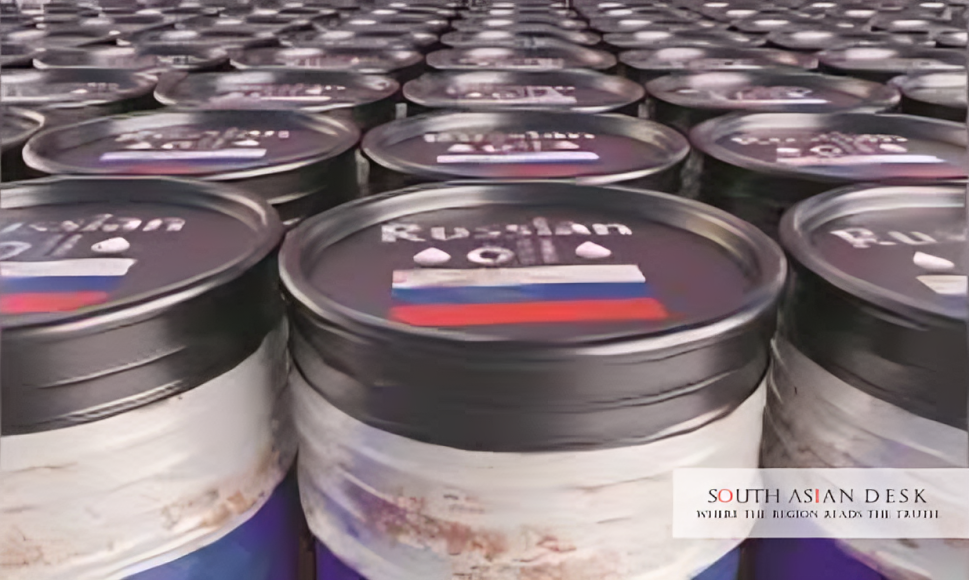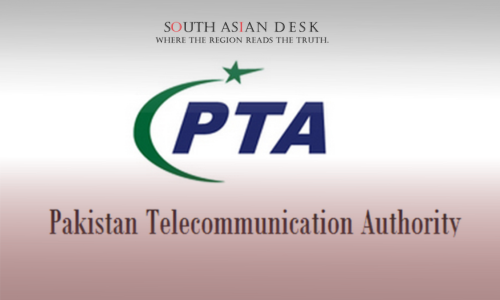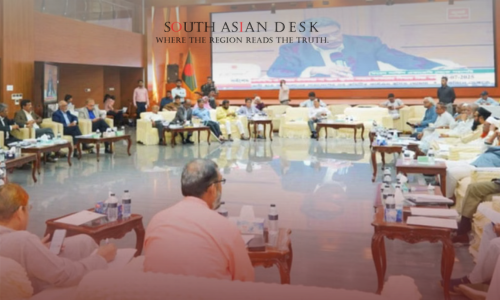US trade negotiators informed their Indian counterparts during recent discussions in Washington that curbing purchases of Russian oil is essential for advancing the US-India trade deal, as revealed on Friday, September 26, 2025.
This stance follows the imposition of an additional 25% tariff on Indian imports, raising punitive duties to 50% overall, aimed at pressuring New Delhi to align with Western efforts to diminish Moscow’s energy revenues amid the Ukraine conflict.
The talks, held during Commerce and Industry Minister Piyush Goyal’s visit from Monday, September 22 to Wednesday, September 24, involved meetings with the US Trade Representative and Secretary of State, focusing on market access and tariff reductions.
Why It Matters for South Asia
The linkage between energy imports and trade negotiations underscores vulnerabilities in South Asia’s economic landscape, where India, the region’s largest economy relies heavily on affordable oil to fuel growth and stabilise domestic prices. Any escalation in US-India trade deal hurdles could ripple across the subcontinent, affecting supply chains, inflation, and regional trade dynamics with the US, a key partner for exports worth billions.
Recent Developments in US-India Trade Deal
Bilateral trade talks between the US and India have progressed constructively over the past months, with five rounds of negotiations completed ahead of an anticipated first tranche agreement by autumn 2025. However, sources familiar with the discussions indicate that unresolved issues, including the US trade deficit with India and market access barriers, continue to impede full closure.
A US official, speaking anonymously, described the negotiations as “on a positive track” but emphasised that “more work is needed” to address core concerns, including India’s sustained imports of Russian crude. India, the world’s third-largest oil importer, has ramped up purchases of discounted Russian oil since 2022, becoming the largest buyer after China, with volumes reaching approximately 1.5 million barrels per day in recent months.
The US has framed these imports as undermining sanctions aimed at curtailing Russia’s war funding in Ukraine. President Donald Trump has publicly expressed frustration, urging not only India but also the European Union and NATO allies to impose stricter Russian oil curbs. This pressure manifests through punitive measures, such as the recent 25% tariff hike, which applies broadly to Indian goods and could impact sectors like textiles, pharmaceuticals, and furniture key exports valued at over $11 billion annually to the US.
Russian Oil Curbs as a Sticking Point
At the heart of the impasse lies India’s strategic diversification of energy sources. New Delhi has defended its Russian oil acquisitions as economically prudent, citing savings of up to $10 billion in foreign exchange annually through discounted rates.
In a related development, Indian officials proposed to the Trump administration that permitting imports of Iranian crude could facilitate a “significant reduction” in Russian volumes, offering an alternative pathway to meet domestic demand without compromising affordability.
During the MEA’s weekly media briefing on Friday, September 26, 2025, Official Spokesperson Shri Randhir Jaiswal addressed queries on the tariffs, stating: “India and the United States are involved in a bilateral trade agreement over the last few months. These ongoing discussions naturally cover all areas of interest to us.”
He directed further specifics to the Department of Commerce, underscoring the multifaceted nature of the US-India trade deal. On the Russian oil issue, a journalist noted that “India’s purchase of Russian oil remains an obstacle, and they have kind of tied it up with the progress in the India-US FTA,” to which the spokesperson affirmed active engagement without elaborating on concessions.
The Commerce Ministry, in an update following Goyal’s visit, affirmed that both sides aim for an “early conclusion” of the pact, with constructive exchanges on goods and services trade. Yet, the integration of geopolitical elements like Russian oil curbs has complicated what was initially envisioned as a tariff-reduction framework.
Broader Implications of Tariffs and Energy Ties
The additional 25% tariff, announced amid Trump’s broader “America First” agenda, exacerbates existing frictions. Indian furniture exports alone, valued at $1.1 billion yearly, face potential 50% duties, while pharmaceuticals, another pillar of bilateral trade, encounter threats of 100% levies. These measures align with US efforts to recalibrate the $190 billion trade imbalance, where India’s surplus stands at around $30 billion.
For South Asia, the stakes extend beyond bilateral ties. Neighbouring economies like Bangladesh and Pakistan, integrated into Indian supply chains, could face indirect hits from disrupted exports. Moreover, heightened focus on Russian oil curbs risks inflating global energy prices, straining import-dependent nations across the region.
India’s position reflects a delicate balance: maintaining energy security while nurturing the US partnership, which has deepened through initiatives like the Quad. New Delhi has accused Western nations of selective enforcement, pointing to continued European trade with Russia despite sanctions.
Background
The US-India trade deal traces its roots to 2023 commitments under the US-India Trade Policy Forum, revived post-elections to counterbalance China’s influence. Early rounds addressed dairy, intellectual property, and digital trade, but the Ukraine war introduced energy as a flashpoint. India’s Russian oil imports surged 80% year-on-year in 2024, prompting US secondary sanctions threats. Recent tariffs echo 2018 steel duties, resolved via quotas, but current dynamics tie directly to Russian oil curbs.
What’s Next for US-India Trade Deal
As negotiators reconvene in October 2025, the US may seek verifiable reductions in Russian crude volumes, potentially tied to quota exemptions. India, meanwhile, pushes for H-1B visa reforms and services inclusion in the pact. Resolution of these intertwined issues could unlock tariff relief and bolster the US-India trade deal, fostering deeper economic integration amid global uncertainties.
The trajectory of the US-India trade deal will hinge on mutual concessions, particularly around Russian oil curbs, shaping not just bilateral commerce but South Asia’s role in the evolving geopolitical order.
Published in SouthAsianDesk, September 27th, 2025
Follow SouthAsianDesk on X, Instagram, and Facebook for insights on business and current affairs from across South Asia.






